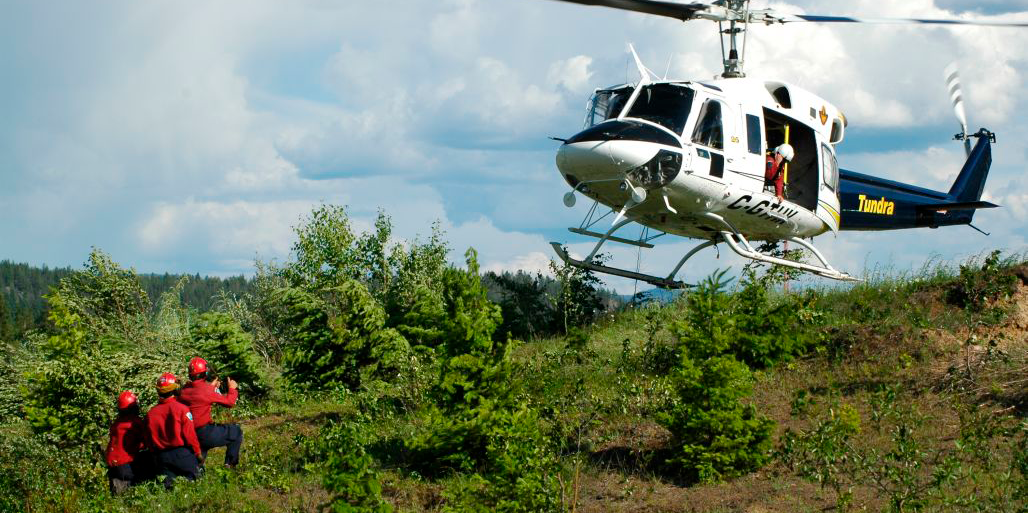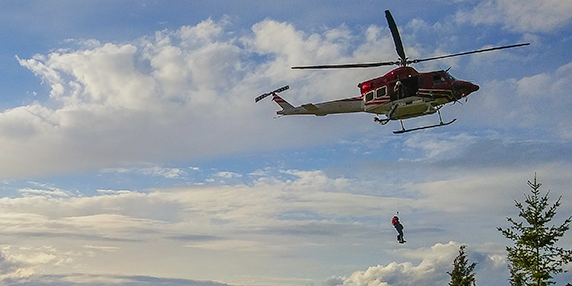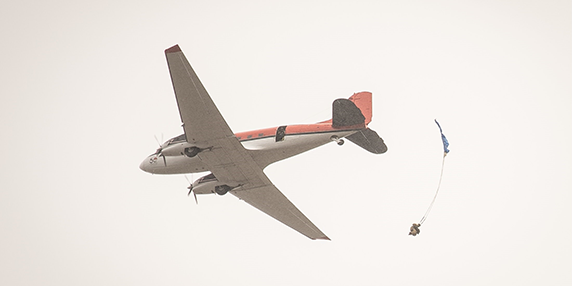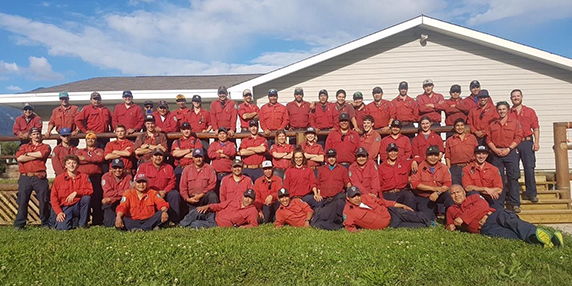Initial attack crews

Initial attack crews are often the first to respond to a wildfire. Due to the quick and effective response of this 3 to 4 person crew, approximately 94% of all new wildfires in B.C. are suppressed.
Initial attack crews respond to new fires quickly using vehicles and aircraft. Crews are:
- Strategically placed based on fire danger
- Independent and mobile (crews are deployed with 1-3 days of supplies and gear)
- Flexible and adaptive (can also be deployed to larger, complex incidents)
Initial attack personnel
There are approximately 400 initial attack firefighters stationed throughout the province who may be relocated based on provincial needs.
These crews are regularly placed on "standby", which means that they are ready to be deployed quickly after a new wildfire starts.
Once deployed, initial attack crews may work and camp near the fire until it is fully controlled.
The BC Wildfire Service also has two additional specialized initial attack crews: Rapattack and Parattack.
Rapattack crews

Rapattack crews are trained to rappel from a helicopter into areas that are hard-to-access by foot or by vehicle, and where there are no suitable landing areas for helicopters nearby. BC Wildfire Service employs approximately 40 firefighters in the Rapattack program. These firefighters are highly trained and versatile, able to aid unit crews in response efforts across the province.
The BC Wildfire Service Rapattack program started in 1977 in Lower Post, B.C. In 1979, the program relocated to its present location in Salmon Arm, B.C., in order to be centrally located to the majority of fires that require rapattack response.
Parattack crews

Parattack crews, sometimes called "smokejumpers," are trained to parachute from fixed-wing aircraft to access wildfires in remote or difficult-to-reach locations. Parattack crews prioritize safety and, similar to rapattack crews, are very versatile. Beyond initial attack, they may also respond to medical emergencies in remote areas, reconnaissance flights to provide response recommendations in addition to firefighting alongside unit crews. BC Wildfire Service employs approximately 60 parattack firefighters based in the Prince George Fire Centre.
One of the most important pieces of the Parattack program is their fixed-wing aircraft, known as jumpships. They can cover more distance in a shorter amount of time than helicopters, while also carrying more gear and equipment.
The BC Wildfire Service Parattack program started in 1998 in Smithers, B.C. In 2000, the program relocated to Fort St. John in order to increase fire response capabilities to long-distance dispatches in the northeastern portion of the province. Over the past ten years, the Parattack program has expanded and now has an additional base located in Mackenzie, B.C.
Apply for a position with the BC Wildfire Service, or get information on how to offer your services to the BC Wildfire Service as a contractor.

